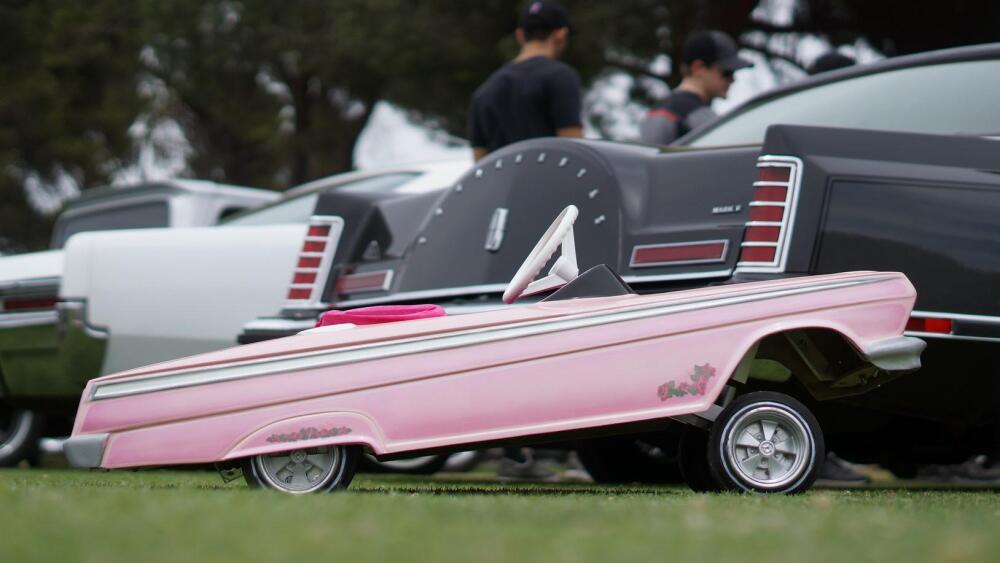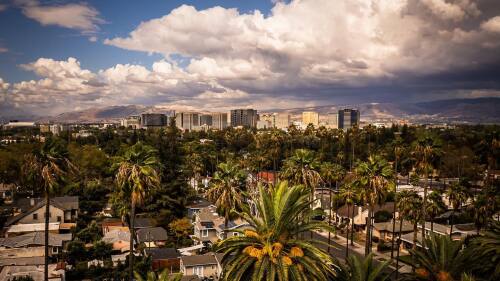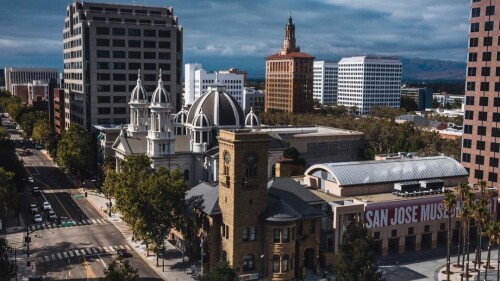Hydraulic lifts, hand-painted art, delicate detailing. San Jose has been host to some of the most brilliant feats of modern engineering. Not the tech sector — we’re talking about lowriding.
But the practice is more than just hot-rodding and modifying classic cars. It’s a community — one that has been an integral part of San Jose’s cultural heritage since the 1940s. In fact, San Jose was known as the Lowriding Capital until 1986, when the city banned the practice, and enacted “no cruising zones” (the ban was overturned in 2022).
Welcome back to 5 Minute Pitch, where we spend five minutes with various San Joseans from all walks of life — from local bands, organizations, and other movers + shakers, to every day residents like yourself — to get an on-the-ground take on the best our city has to offer.
Today, we’re talking to artist Ricardo Cortez, Director of Marketing at the Miller Center for Social Entrepreneurship at Santa Clara University. Cortez’s new children’s book, “The ABC’s of Lowriding,” discusses the people, traditions + skills that you can discover through the culture.

Cortez’s “Chicano Limousine” is a modified Buick Le Sabre.
Photo courtesy @mrlowriderfever
Q: What is important about lowrider culture in San Jose?
A: We were pioneers back when Lowriding started to flourish in the early ‘70s, and there were a lot of innovations that came out of San Jose Lowrider culture. I mean, you have Story and King blowing up as a major cruising hub (for all of California, really). You have innovations in hydraulic technology with people like Andy Douglas. And some of the first Lowrider car clubs started right here in San Jose for Northern California.
Q: Wasn’t Lowriding fully outlawed in San Jose? What was that like?
A: I think you’d classify it as cruising was illegal, essentially. “No Cruising” signs went up in 1986. But even before that, law enforcement was trying to enforce to stop all the cruising in east San Jose (at Story + King). The cruisers outnumbered the cops, so [they] had to put laws in place to corral that kind of activity, but it never really stopped cruising from happening.

Cortez made this pedal car that runs on auto-mode to lift + lower on its own.
Photo courtesy @mrlowriderfever
Q: What was the response to its legalization in 2022?
A: Yeah, the “No Cruising” signs finally came down, and we had a big celebration at City Hall. We shut down the whole City Hall plaza. Thanks to the work of the United Lowrider Council of San Jose, their allies, community supporters, and the community really showed up for that celebration.
Q: Is this history common knowledge today?
A: Right across the street from City Hall is San Jose State, which is pivotal for the Chicano movement. In the late ‘60s and early ‘70s, you had the first walkouts happening in the area by students that were demanding change on campus, and that begins to permeate throughout the city. A lot of that history gets overlooked, or isn’t talked about as much, and it’d be great to bring that back.
Q: What does your book do to close this knowledge gap?
A: So this is more of a simplified version of Lowrider culture. And what it aims to do is have kids be more curious about the culture that their families might be a part of. In the books there are illustrations that hopefully kids will gravitate towards. At the end of the book, there’s a whole photo album of vintage Lowrider photos from both LA and San Jose. So the aim is to kind of create these conversations, these dialogues that can happen with the older generations, and translate that to the newer generation.
Q: Last question – who has the best orange sauce in San Jose?
A: [Laughs] I’m gonna say La Vics. That was the one I was introduced to when I was a tween. Yeah, I gotta go with that old-school one there.
Cortez will be hosting a book release party + toy drive in partnership with Creekside Socials, Saturday, Dec. 9, 12-4 p.m. with proceeds benefitting Sacred Heart Nativity School and Los Amigos de Guadalupe.
Know an interesting San Josean that we can interview next? Send us tips.












